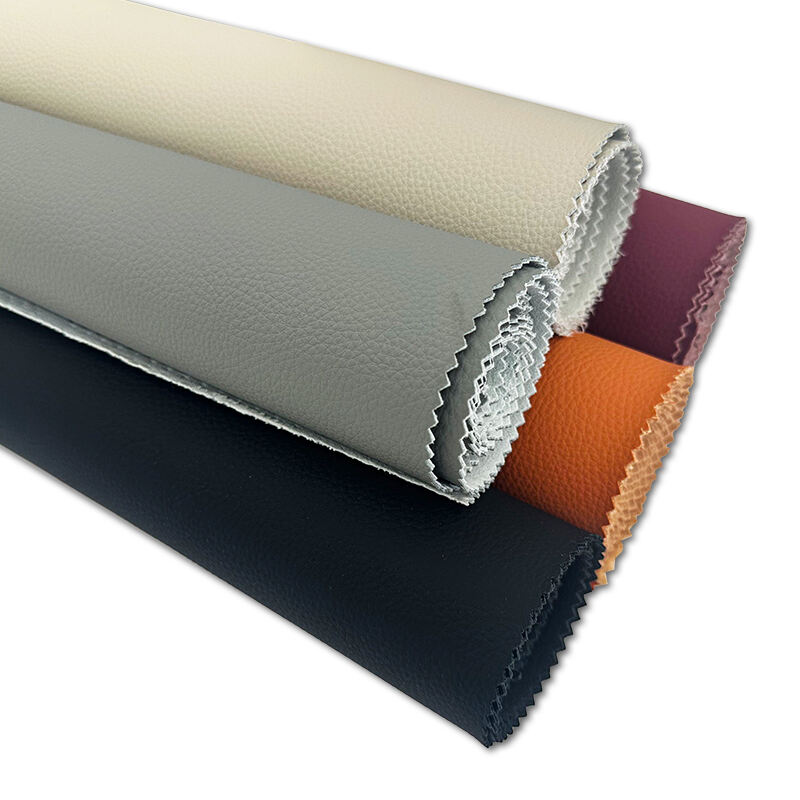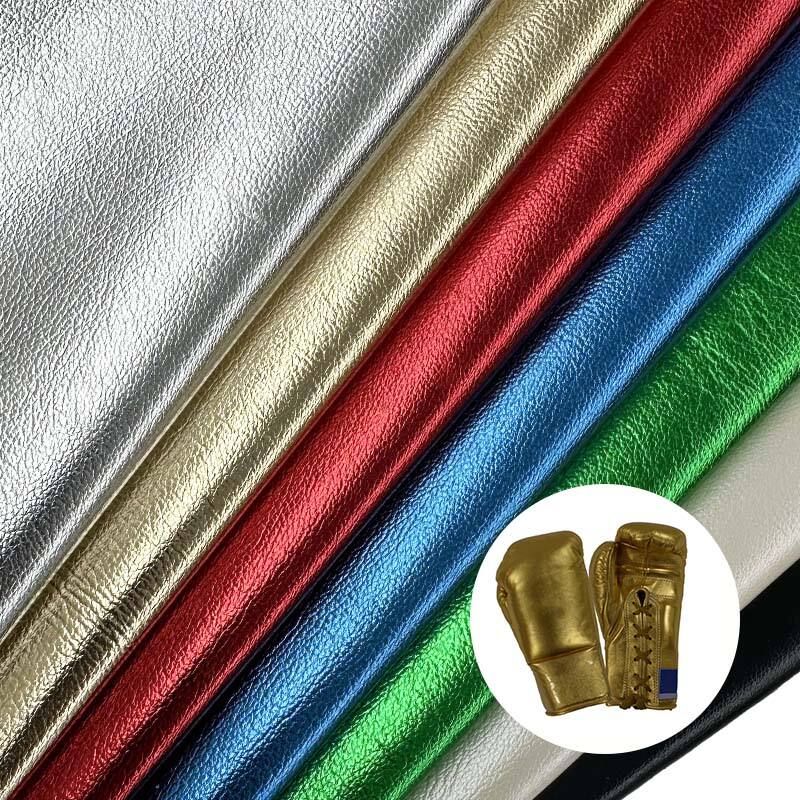Découvrir les avantages des canapés en cuir artificiel pour la vie moderne
Introduction aux canapés en cuir artificiel
Les canapés en cuir artificiel, souvent connus sous le nom de cuir synthétique ou Froid sofas, sont fabriqués à partir de matériaux tels que le polyuréthane (PU) ou le chlorure de polyvinyle (PVC). Ces matériaux sont conçus pour imiter l'apparence et la texture du cuir véritable tout en offrant une durabilité accrue et une facilité d'entretien. Le cuir artificiel est non seulement résistant à l'usure, mais il est également plus abordable que le cuir véritable.
La popularité des canapés en cuir artificiel est en hausse en raison de l'accent croissant mis sur un mode de vie durable. Les consommateurs sont de plus en plus attirés par des produits écologiques et sans cruauté. Les tendances du marché indiquent un changement vers des alternatives synthétiques qui minimisent l'impact environnemental tout en maintenant un attrait esthétique. En conséquence, le cuir artificiel devient un choix privilégié pour ceux qui recherchent des options de mobilier élégantes, durables et économiques.
Avantages de choisir des canapés en cuir artificiel
Choisir des canapés en cuir artificiel offre plusieurs avantages environnementaux. Tout d'abord, ces canapés réduisent considérablement l'empreinte carbone car ils n'impliquent pas l'agriculture animale, qui est une source majeure d'émissions de gaz à effet de serre. Selon les Nations Unies, l'élevage contribue à environ 14,5 % de toutes les émissions de gaz à effet de serre d'origine humaine. De plus, opter pour le cuir artificiel aide à diminuer la cruauté envers les animaux, car aucun animal n'est blessé dans sa production. Les marques adoptant des pratiques durables, telles que l'utilisation de matériaux recyclés pour le cuir synthétique, renforcent encore son attrait écologique.
Les canapés en cuir artificiel sont également plus rentables par rapport à leurs homologues en cuir véritable. Le prix d'un canapé en cuir italien typique peut facilement dépasser 2 500 $, tandis que les alternatives en cuir synthétique coûtent une fraction de ce prix. Cela en fait une option économique pour les consommateurs. De plus, la durabilité et l'entretien facile du cuir synthétique peuvent entraîner des coûts à long terme réduits. Alors que le cuir véritable nécessite des traitements réguliers pour maintenir son apparence, le cuir artificiel est plus simple à nettoyer, nécessitant souvent juste un chiffon humide. Cette longévité combinée à l'accessibilité financière fait des canapés en cuir artificiel une option attrayante pour les acheteurs soucieux de leur budget.
Durabilité : Les canapés en cuir artificiel sont-ils une option viable ?
Les canapés en cuir artificiel sont en effet une option viable en matière de durabilité. Bien que le cuir véritable soit souvent salué pour sa longévité, des études indiquent que le cuir artificiel moderne, en particulier des matériaux comme le PU (polyuréthane) et le PVC (chlorure de polyvinyle), offre une durabilité louable. Cuir PU , par exemple, est conçu pour être flexible et résistant à l'usure, ce qui en fait un choix populaire pour les meubles. En comparaison avec le cuir véritable, qui nécessite un entretien régulier pour éviter les fissures, le cuir artificiel tend à être plus résistant à l'usure quotidienne.
Pour maximiser la durée de vie de votre canapé en cuir artificiel, plusieurs conseils d'entretien peuvent être suivis. Un dépoussiérage et un nettoyage réguliers avec un chiffon humide sont essentiels, en évitant les produits chimiques agressifs qui pourraient dégrader le matériau. Il est conseillé de garder le canapé à l'écart de la lumière directe du soleil et des sources de chaleur, car ces éléments peuvent entraîner une décoloration et un affaiblissement du matériau au fil du temps. De plus, l'utilisation d'un spray protecteur pour cuir synthétique peut fournir une couche de protection supplémentaire contre les éclaboussures et les taches, garantissant que votre canapé reste en excellent état pendant des années.
Différents types de cuir artificiel et leurs utilisations
Comprendre les différents types de cuir artificiel est essentiel pour sélectionner celui qui convient le mieux à vos besoins en matière de mobilier. Cuir PU , également connu sous le nom de cuir en polyuréthane, est un choix populaire pour les canapés en raison de sa composition en cuir fendu recouvert d'une couche de polyuréthane. Ce type de cuir est non seulement durable et économique, mais aussi résistant aux taches et aux liquides, ce qui le rend idéal pour les familles avec des enfants et des animaux de compagnie. Le cuir PU peut imiter l'apparence et la sensation du cuir véritable de manière assez convaincante, offrant une alternative élégante sans le coût élevé.
Cuir en microfibres est une autre excellente option, particulièrement appréciée pour sa respirabilité et sa douceur. Il est fabriqué à partir de fines fibres synthétiques tissées dans un tissu dense, puis recouvert de polyuréthane. Cette composition le rend incroyablement résistant à l'usure tout en maintenant une texture légère et souple. La respirabilité du cuir en microfibre assure un confort d'assise, même dans des climats plus chauds, et sa douceur ajoute une sensation luxueuse comparable à celle du daim véritable.
Enfin, différencier les types de cuir synthétique est crucial pour faire le bon choix pour diverses applications. Par exemple, cuir reconstitué —qui est fabriqué en combinant du polyuréthane ou du latex sur un maillage de fibres—est généralement utilisé dans des applications moins exigeantes comme des chaises à faible utilisation ou des objets décoratifs en raison de sa durabilité inférieure par rapport au cuir PU ou au cuir en microfibre. Chaque type a des propriétés uniques qui peuvent être exploitées pour des usages spécifiques, garantissant le bon équilibre entre attrait esthétique et endurance pratique.
Meilleurs produits de canapés en cuir artificiel
Cuir automobile en silicone
Le cuir automobile en silicone est réputé pour ses avantages uniques, en particulier lorsqu'il est appliqué aux designs de canapés. Ce type de cuir se distingue par sa résistance exceptionnelle aux températures, ce qui le rend idéal pour divers environnements. De plus, le cuir en silicone offre une durabilité supérieure et une résistance aux taches, garantissant que votre canapé reste en parfait état avec un entretien minimal. Il possède également des propriétés hypoallergéniques, ce qui le rend adapté aux foyers ayant des préoccupations allergiques. Pour ceux qui s'intéressent à la durabilité, le cuir en silicone offre une option plus écologique par rapport aux synthétiques traditionnels.
Cuir automobile Napa
Le cuir Napa est célébré pour offrir un mélange de luxe et de durabilité, ce qui en fait un choix de premier plan pour les fabricants de canapés et les consommateurs. Le cuir dégage une sensation douce et beurrée qui améliore le confort de tout agencement de sièges. De plus, il est connu pour sa résilience exceptionnelle, résistant à l'usure quotidienne tout en maintenant son apparence et sa sensation premium. Le cuir Napa ajoute non seulement de l'élégance mais promet également une longévité, garantissant que votre investissement dans un canapé reste robuste au fil des ans.
Cuir de gant de boxe premium
Le cuir de gant de boxe premium est remarquable pour sa durabilité et son confort inégalés, des qualités essentielles pour des environnements exigeant des performances maximales. Conçu à l'origine pour des sports à fort impact, ce cuir est fait pour résister à un stress et à une usure significatifs, se traduisant exceptionnellement bien dans les applications de mobilier où la durabilité est une priorité. En plus de sa longévité supérieure, il offre du confort, ce qui en fait un excellent choix pour les canapés dans les foyers actifs ou les environnements commerciaux. Ses caractéristiques orientées vers la performance offrent aux canapés une durée de vie améliorée sans compromettre le confort.
Prendre soin de votre canapé en cuir synthétique
Un entretien approprié de votre canapé en cuir synthétique est essentiel pour sa longévité et son apparence. Commencez par le nettoyage : utilisez un chiffon doux et humide pour essuyer délicatement la surface, car cela prévient les rayures et l'écaillement. Évitez les produits chimiques agressifs qui pourraient détériorer le matériau ; optez plutôt pour des nettoyants spécifiques pour cuir synthétique que l'on trouve dans la plupart des magasins. Un dépoussiérage régulier et un aspirateur occasionnel aideront également à le garder exempt de saleté et de débris.
Des mesures préventives peuvent réduire considérablement l'usure de votre canapé. Tout d'abord, évitez de placer le canapé en plein soleil, car cela peut provoquer une décoloration et des fissures au fil du temps. Gardez-le éloigné des chauffages ou des cheminées pour éviter qu'il ne se dessèche. L'utilisation de housses de protection peut protéger contre les éclaboussures et les taches accidentelles. De plus, encouragez un saut minimal ou un poids excessif sur le canapé pour maintenir sa structure et son apparence. Avec ces étapes, votre canapé restera un élément élégant et confortable dans votre maison pendant des années.
L'avenir des canapés en cuir artificiel dans un mode de vie durable
L'avenir des canapés en cuir artificiel est réinventé par des innovations dans des matériaux écologiques. Les chercheurs et les fabricants investissent dans le développement d'alternatives bio-sourcées au cuir synthétique traditionnel, qui repose souvent sur des ressources dérivées du pétrole. Par exemple, le cuir cultivé en laboratoire utilise des techniques d'agriculture cellulaire pour produire des matériaux similaires au cuir sans avoir besoin de peaux animales ou de produits chimiques synthétiques. Ces avancées visent à réduire l'empreinte environnementale en utilisant moins d'eau et d'énergie tout en minimisant les déchets et la pollution.
Alors que les consommateurs privilégient de plus en plus la durabilité dans leurs décisions d'achat, les canapés en cuir artificiel sont bien positionnés pour répondre à ces demandes. Une étude de Nielsen indique que 81 % des consommateurs mondiaux estiment fermement que les entreprises devraient aider à améliorer l'environnement, et cela s'étend à leurs choix de mobilier. En choisissant des matériaux innovants, les consommateurs peuvent profiter des avantages esthétiques et fonctionnels du cuir sans contribuer à la déforestation ou à la pollution par les microfibres. Les experts suggèrent que ce changement vers des options écologiques n'est pas seulement une tendance, mais un mouvement décisif vers un avenir plus durable dans le design d'intérieur.

 EN
EN










